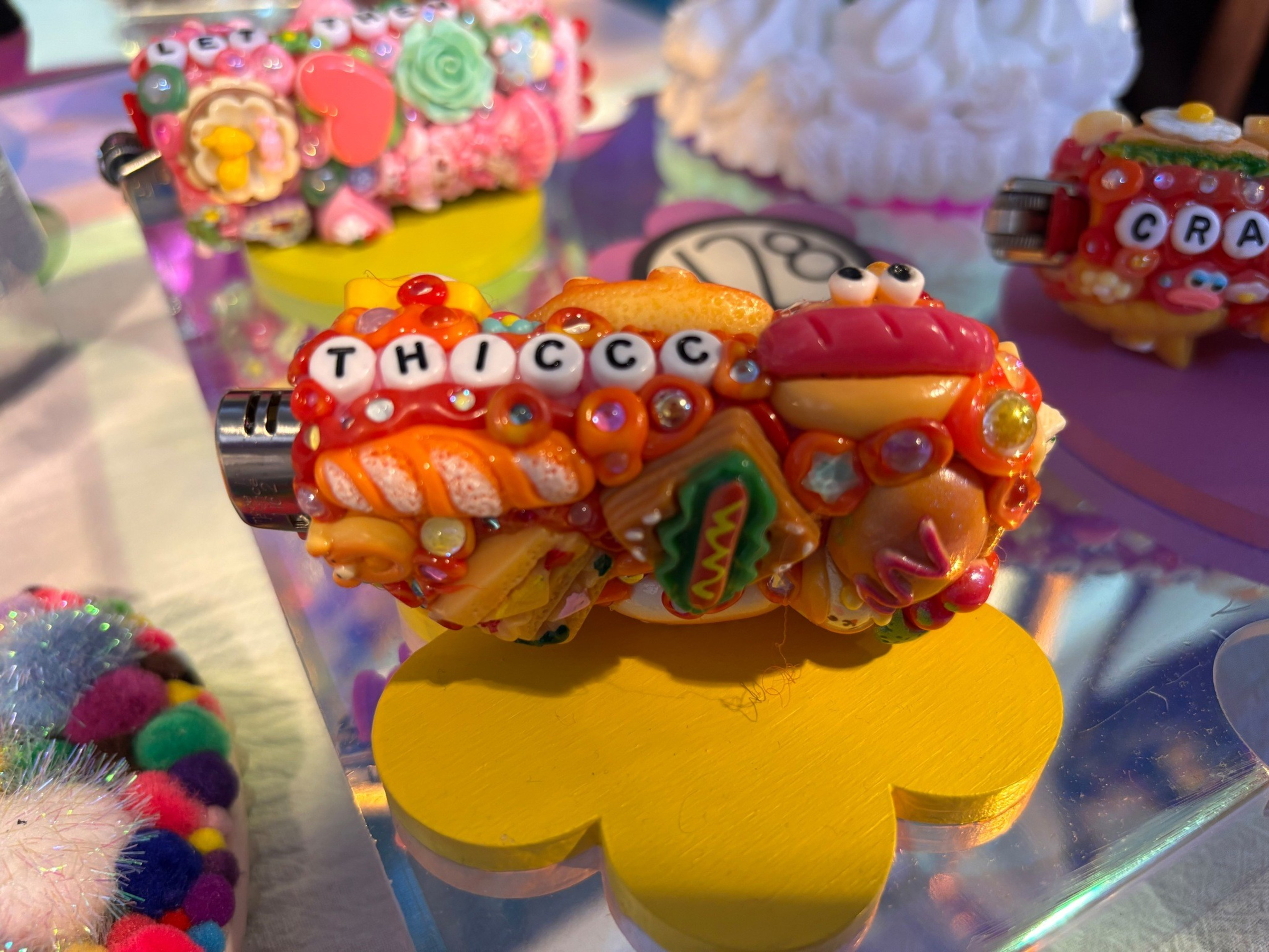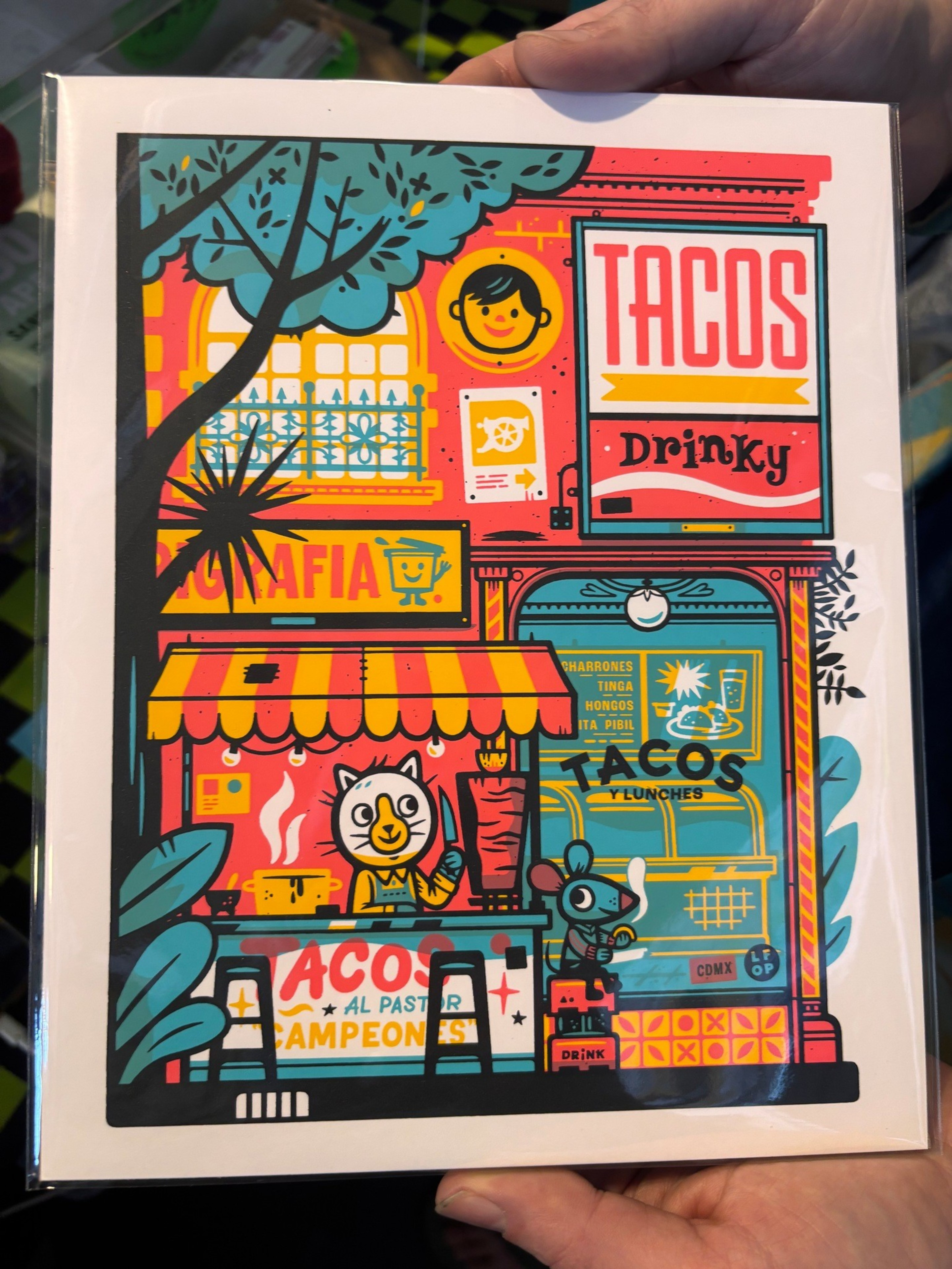Drea Svea’s CBD-induced dog Sugar Baby has many middle names, including Cleopatra, Houdini, and Ruth Bader Ginsburg. Her 10-by-10-foot booth at this year’s West Coast Craft was equally comprehensive.
“I mean, basically, this is a culmination of my whole life,” Svea said on Saturday, during the first hours of the weekend-long event.
Svea was joined by hundreds of other creatives — and thousands of attendees — who packed into the Fort Mason Center’s Festival Pavilion this weekend for the two-day fair. The Standard stopped by to speak with some creators about their products and what they would recommend as an artsy gift for a loved one this holiday season.

Svea offered plenty to choose from. Among her displayed products (opens in new tab) were earrings, necklaces, bucket hats, handbags, and, of course, dog outfits. Svea said her art is unique since there are no duplicates, and each unit features what she calls “pattern smashing,” where she finds a color or theme (like purple or fast food) that she can build off of. That includes her “puff pals,” eccentric cases for lighters that can make sparking things — from candles to joints — more enjoyable.
Although her favorite puff pals go for $128, she was sure to note that they take up to two days for her to complete. Even so, Svea isn’t claiming to be raking it in from her creations (not that she even prefers it that way), and recommended bartending to any presumptuous artists out there.
“Making money off of it hurts the art in a lot of ways, because I’m competing with other countries that are working for pennies to the dollar,” Svea said. “I’m not sitting there trying to be a sweatshop making the same damn thing over and over. I want to impress myself every time, so I’m always putting new fabrics and new textures and new colors together to see, you know, what happens.”
Others at the fair were not so down on their chances to both make cool stuff and a living for themselves. James Buchanan (not the former U.S. president) was at the fair to showcase his prints that he and his wife have been making for a quarter-century. The first show they did in 2004, they made just over a thousand bucks — but have since made up to $30,000 at one show.
“Even in bad economic times like this,” he said, “we have stuff that’s at a low price, that’s handmade, and, like, it just works.”
For a holiday gift, Buchanan recommends his Mexico City storefront posters (opens in new tab) ($25) which the pair made for a show they did there this year. His favorite features a cat selling a taco to a mouse.

“We found over the years that, like, what people respond to is our sense of humor or our personality,” Buchanan said.
Izzy Kostrzewa’s business is based on a different vision: “to create a collection of fashion products based entirely on vintage and waste textiles.”
“The biggest thing standing in our way from having real sustainable fashion is that making new fabric is so energy consumptive,” she said.


Using mostly vintage komodos and obis that “are basically worth nothing” and that her friend ships in from Japan, Kostrzewa designs mostly clothes, but also what she calls the “artist roll (opens in new tab)” a discarded obi that’s been repurposed into storage for crafting tools, makeup, or supplies for rolling tobacco.
“It’s not for men or women,” she said. “It’s just, for like, anyone who thinks it’s interesting and beautiful.”
Kostrzewa noted the roll was on sale at West Coast Craft for $50 but goes for $75 online.
Unlike Kostrzewa, who flew in from New York, or other craftsmen that drove to the fair from Southern California or other parts of the Bay Area, Jeremiah Barber is based in SF’s Dogpatch neighborhood. Barber’s philosophy is to make “funky ceramics that are functional, but leaning to the sculptural.”
“I make stuff that is really weird and colorful,” he said. “It’s a way to start your day with something that is just a little surprising.”
For Barber’s mugs (opens in new tab), that design means making handles that you wouldn’t see on a normal mug, including some that you can only fit one finger through.
“[They] invite different ways of holding,” he said. “You don’t necessarily have a single approach to how you grip them?”

For this holiday season, though, Barber suggests one of his smaller beverage containers ($42) that doesn’t have a handle, which he refers to as a “tumbler.” While Barber notes the cup is perhaps too small for his big hands, he said that doesn’t mean other small-handed creatures won’t like it better than he does.
“One of the things I really like about doing the fair is that people have very different tastes, and you get to see people interact with the work you’re making,” he said. “As I’ve kind of explored and interacted with folks, I have been expanding my options.”
Amanda Dimova has also expanded her options over the years, switching her material from leather to acrylic as the latter was far easier to work with — and make jewelry out of.
Dimova started the business as a side hustle in college, but over the last 20 years she’s caught the eye of celebrities like Aubrey Plaza, who wore her knife hair clip (opens in new tab) ($37.50) on the red carpet for a movie premiere.
“They’ve been kind of all over the place,” Dimova said. She recommends those, or any of her other earrings that she recreates with an etch-and-sketch type tool, as a holiday gift.
“Goom,” which means dream in Korean, is the name of the clothing brand that Yong runs out of L.A.’s Koreatown. Most of his products, from sweatshirts to bumper stickers, align with that theme of dreaming, including every one of his products that mentions a “turtle,” an animal which sums up the philosophy of his art. The hats (opens in new tab) which read “Turtle-ly Awesome” ($42) were his recommendation for a gift.
“They do nothing to achieve everything,” Yong said. “It’s just fun words, but like, it’s really about the human messages.”


